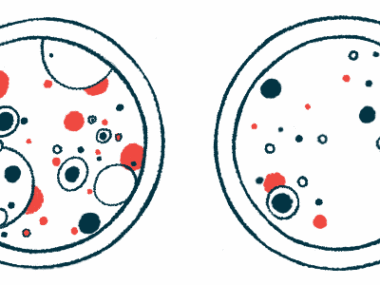2 imaging techniques can detect liver issues in CF children: Study
Noninvasive scans may help diagnose, monitor liver concerns without biopsy
Written by |

Two imaging techniques, called elastography and spectroscopy, can detect liver stiffness (hardness) and the buildup of fat in the liver in children with cystic fibrosis (CF) — particularly among those with CF-related liver disease — a study found.
Importantly, because elastography and spectroscopy are noninvasive, these scans may offer a more convenient way to diagnose and monitor liver involvement in CF compared with the traditional approach of biopsy, which involves taking a sample of liver tissue, according to the researchers.
“While liver biopsy is the gold standard for demonstrating [liver] involvement, its invasiveness prompts a search for noninvasive alternatives,” the team wrote.
“Elastography and spectroscopy are promising methods to assess liver involvement in patients with CF, as they can be routinely applied in clinical practice and may favorably impact the early detection of CF-related liver disease and related complications,” the researchers wrote.
The study, “Liver magnetic resonance elastography and fat fraction in pediatric patients with cystic fibrosis versus healthy children,” was published in the journal Pediatric Radiology by a team of researchers in Turkey.
Elastography, spectroscopy named as potential imaging techniques
In CF, thick mucus can build up in the liver, causing damage. CF-related liver disease is most common in children, and can lead to serious complications. While liver damage occurs early in life, it often shows no symptoms until later stages of the disease.
“Currently, liver involvement is a common cause of mortality [death] after lung disease and lung transplantation-related complications,” the researchers, from the Hacettepe University School of Medicine, in Ankara, wrote.
However, the team noted, such issues are difficult to detect early, and biopsies remain the standard diagnostic tool.
“Due to the invasive nature, the need for repeat interventions during the disease course … and the complication risks, there is an ongoing search for alternative noninvasive methods,” they wrote.
Here instead, the researchers focused on two other imaging techniques: magnetic resonance elastography, which uses low-frequency vibrations to check the liver for stiffness related to tissue scarring, and spectroscopy, which can measure fat content based on the amount of light that is taken up or given off by the liver.
Due to the invasive nature [of liver biospsy], the need for repeat interventions during the disease course … and the complication risks, there is an ongoing search for alternative noninvasive [diagnostic] methods.
The team compared the imaging findings from 51 children who had been diagnosed with CF at a median age of 3 months with those from 24 healthy children. Boys comprised nearly two-thirds (63%) of children in both groups: 32 among the CF children and 15 of the healthy youth. Their mean age was similar (12 vs. 11.1 years), but weight and height were on average lower in those with CF.
At entry to the study, 23 children with CF (45.1%) had elevated liver enzymes, a sign that the liver may be damaged. More than half (52.9%) were found to have liver involvement on an ultrasound, and 14 (27.5%) were diagnosed with CF-related liver disease.
Elastography revealed normal findings in a smaller proportion of children with CF compared with healthy children (52.9% vs. 87.5%). Liver stiffness reflecting different degrees of scarring was detected in 10 children with CF (19.6%) versus none of the healthy children.
Hepatosteatosis, or fatty liver caused by an abnormal buildup of fat, was detected by spectroscopy in a higher proportion of children with CF (39.2% vs. 16.7%). Median fat fraction, a measure of fat content, also was significantly higher in the CF children (4.4% vs. 3.2%).
“Although CF patients had lower weight, height, and BMI [body mass index, a measure of body fat based on weight and height] than the control group, the liver fat fraction in CF patients was higher than that in the control group,” the researchers wrote.
Among children with CF, median liver stiffness was significantly higher in those with CF-related liver disease (3.12 vs. 2.32 kilopascals). Liver stiffness was linked to elevated liver enzymes and fewer blood-clotting platelets, but not to fat fraction.
According to the researchers, these findings show the potential of elastography and spectroscopy to assess liver involvement in CF patients. But the team stressed that their study was limited by the small number of children involved.
“Prospective studies with larger samples should provide better insight into the relationship between [magnetic resonance] elastography findings and liver involvement in CF patients,” they added.







